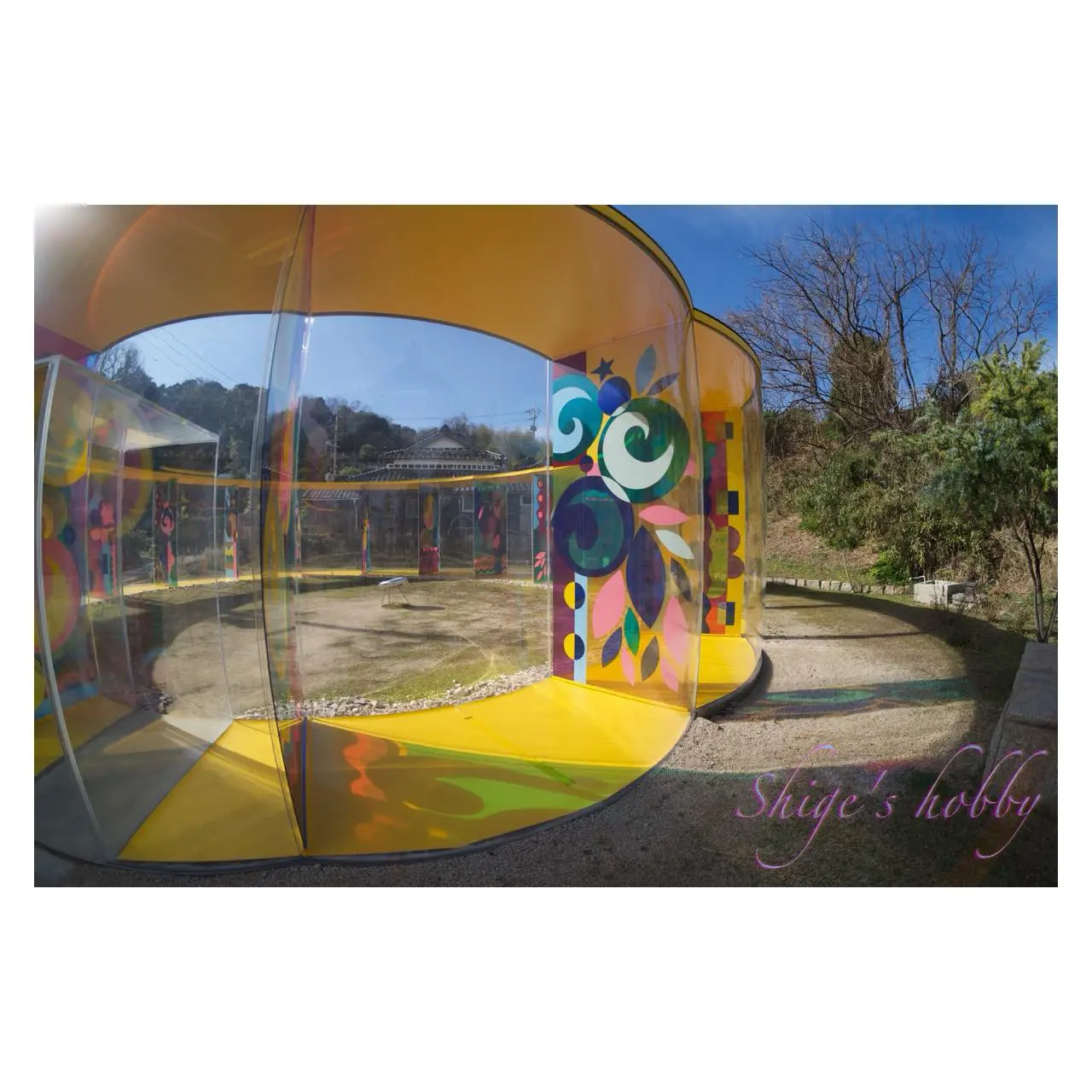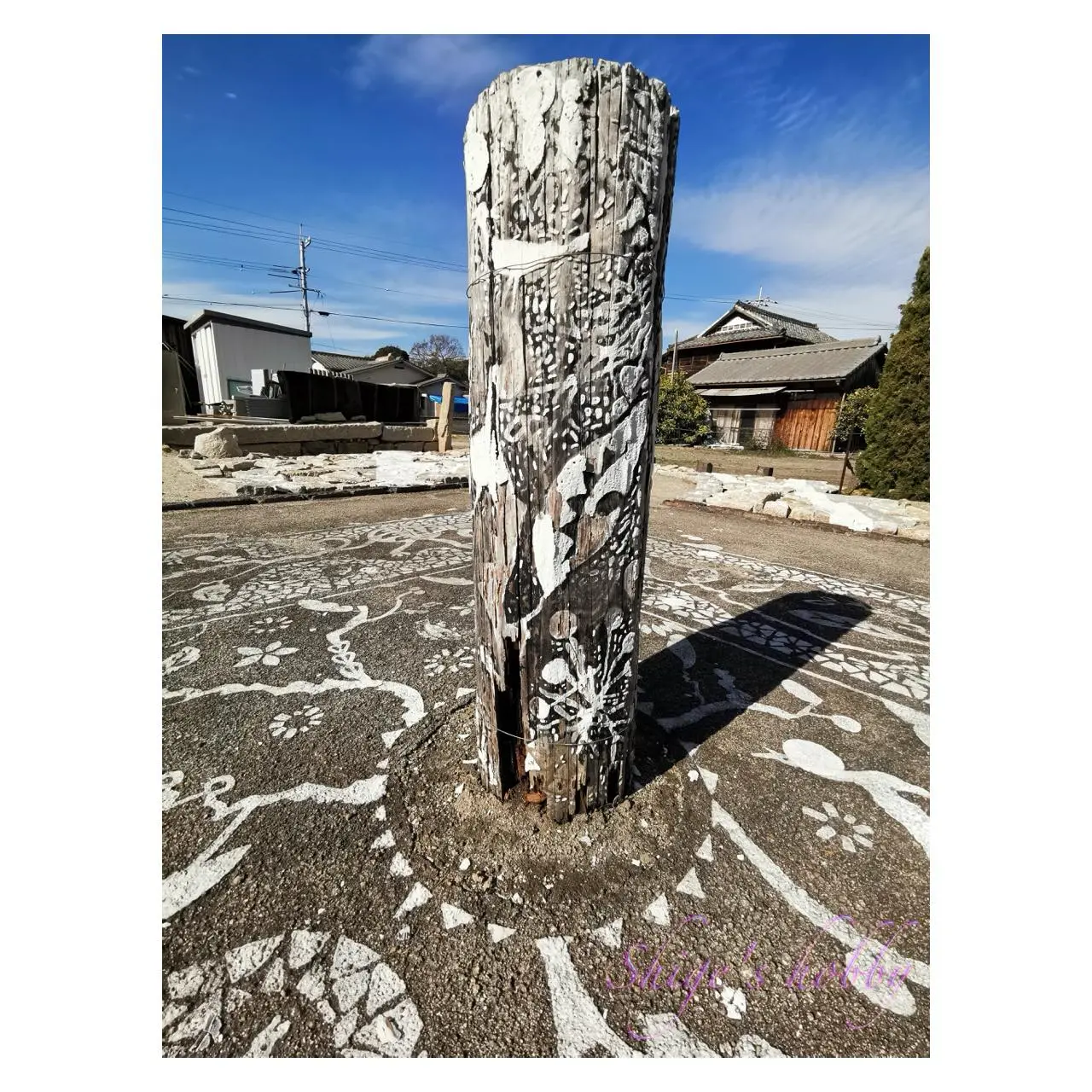Last updated on 2025-11-11
I toured Inujima in the middle of winter and saw Asai Yusuke’s Listening to the voices of yesterday, as if listening to ancient voices.
Table of contents
Overview
- Inujima is one of the islands that make up the Setouchi International Triennale.
- Please check the opening hours of the island’s facilities before visiting.
View Report
This is a report on a day trip to Inujima in the Seto Inland Sea on January 18, 2020, when the Setouchi Triennale was not being held, and the local artworks were viewed.
It is about 85 km from my hometown of Himeji City to Hoden Port, where the boat to Inujima departs, and it took about an hour and a half by rental car. There is a municipal paid parking lot near the port, and I paid 500 yen per day for parking. Looking at Google Maps, I saw that the coastal parking lot a little closer to the sea is free except in the summer, but I don’t know what the situation is as of 2024.
For information on boats connecting Inujima in the Seto Inland Sea and Hoden Port, please see here.
The boat fare to Inujima was 300 yen in 2020, but has been changed to 400 yen in 2024. I still think it is a cheap price. If you are visiting during the non-television festival period or on a day other than Saturdays and Sundays, I recommend checking the official museum information about the opening status of the facilities on the island before visiting.


I had a little time before the 11 o’clock boat departed, so I wandered around the town and found a cat. It is truly a port town. After a 10-minute boat ride, we arrived at Inujima. Since I hadn’t had lunch yet, I had lunch at the ticket center right next to the port. The photo shows octopus rice, but depending on the season, they may also have sea bream rice.



Inujima is not a very large island, so you can explore the island on foot. I went there in the middle of winter, but the day I visited was sunny and the sun was strong, which surprised me. My jacket got in the way along the way.
I decided to return on the 2 p.m. boat as a day trip, so I was unable to visit the south side of the island or the Kurashi Botanical Garden.
If you want to see all the artworks and facilities on the island, you should take the 5 or 6 p.m. boat back, which should give you enough time to appreciate them.
There were almost no eating and drinking facilities on the island when the art festival was not in progress, so it would be a good idea to buy bottled drinks and snacks to stay hydrated before boarding the boat.
There are several accommodations on the island, so it might be a good idea to stay overnight and relax before heading to the next island.
There are ferries from Inujima to Teshima and Naoshima. There are three boats a day, so you can either stay overnight on Inujima and head to Teshima or Naoshima in the morning, or take the evening boat to Teshima or Naoshima and stay the night there.
During the triennial art festival, all the accommodation facilities will likely be fully booked, so it would be difficult to just do things on a whim.
Table of contents of Viewing report
- Inujima Wharf
- 《sprouting 01》2016 Yusuke Asai
- I Residence
- 《Self-loop》2016 Kazuyo Sejima, Yuko Hasegawa, Olafur Eliasson
- A Residence
- 《Yellow Flower Dreams》2019: Kazuyo Sejima, Yuko Hasegawa, Beatriz Milhazes
- C Residence
- 《Untitled (Flowers at Residence C)》2019 – Masanori Handa
- S Residence
- 《Contact lenses》2013 Haruka Kojin, Kazuyo Sejima, Yuko Hasegawa
- Nakanoya Azumaya
- Kazuyo Sejima, Yuko Hasegawa
- Stoneworker’s house ruins
- 《Listen to the voices of yesterday, just as you would listen to ancient voices.》2013-2016 Yusuke Asai
- F Residence
- 《Biota(Fauna / Flora)》2013 Kohei Nawa, Kazuyo Sejima, Yuko Hasegawa
- Inujima Seirensho Art Museum
- Hiroshi Sambuichi, Yukinori Yanagi
■Inujima Wharf
《sprouting 01》2016 Yusuke Asai
In 2016, Yusuke Asai added to “Listening to the Voices of Yesterday, as if Listening to the Voices of Ancient Times” (2013). At that time, he painted “Sprouting 01” on the alleyway that runs from the port to the I Residence along the bay beyond the site.
This work can be seen vaguely when you turn Google Maps into a satellite image display. From a distance, it looks like one large painting, but when you get closer, you can see that it is made up of a collection of tiny parts, and the work is very delicate.
The work was created in 2016, and when I viewed it in 2020, four years later, the burned white lines looked faded and damaged, even though it had not been that long. I have never seen a work with white lines in an urban area that has become so faded, so this may be due to the fact that it was installed near the sea and exposed to salty wind and rain. You can feel the difficulty of maintaining an outdoor work.


■I Residence
《Self-loop》2016 Kazuyo Sejima, Yuko Hasegawa, Olafur Eliasson
The museum was designed by Kazuyo Sejima and Yuko Hasegawa, and inside it displays works that use mirrors, one of Eliasson’s signature features.


■A Residence
《Yellow Flower Dreams》2019: Kazuyo Sejima, Yuko Hasegawa, Beatriz Milhazes
This museum was also designed by Kazuyo Sejima and Yuko Hasegawa, and has been exhibiting colorful works by Beatriz Milhazes since 2018. This space was created in 2013, and Haruka Kojin’s “Reflect” was exhibited at the Setouchi International Triennale that year.


■S Residence
《Contact lenses》2013 Haruka Kojin, Kazuyo Sejima, Yuko Hasegawa
This museum was also designed by Kazuyo Sejima and Yuko Hasegawa, and Haruka Kojin’s work has been exhibited since the Setouchi Triennale in 2013. I saw the work on a clear day, and the shadows cast on the ground left a strong impression on me.


■C Residence
《Untitled (Flowers at Residence C)》2019 – Masanori Handa
The exhibition space was renovated from a 200-year-old building and was completed in 2013. In 2013, it exhibited an installation by Jun Nguyen-Hatsushiba, in 2016 Chinatsu Shimodaira’s Ether, and since 2019 has been exhibiting Handa Masaki’s Untitled (Flowers at Residence C).


■Nakanoya Azumaya
Kazuyo Sejima, Yuko Hasegawa
The rest facility, designed by Kazuyo Sejima and Yuko Hasegawa, is lined with chairs decorated with rabbit ears.

■ Stonemason’s House Ruins
《Listen to the voices of yesterday, just as you would listen to ancient voices.》2013-2016 Yusuke Asai
This work was created on land where a stonemason’s house once stood. It was made by cutting out a quicksheet of white line material (welded rubber material) used for road markings, creating shapes, and then burning it into the ground.
The patterns are so intricately made that it’s hard to believe they were cut out of a sheet, and given the size of the work, it must have taken a considerable amount of time to cut out and burn the white lines. Also, the exhibition area has no roof, so working outdoors must have been difficult.
The work features several pillars as symbols of the remains of the house, but perhaps because they are exposed to wind and rain every day, the wooden pillars have become quite damaged over the seven years they have been there, and are in danger of collapsing without maintenance. In comparison, the stone pillars have not deteriorated in any particular way, and the difference in material is clearly visible.


■F Residence
《Biota(Fauna / Flora)》2013 Kohei Nawa, Kazuyo Sejima, Yuko Hasegawa
This museum was also designed by Kazuyo Sejima and Yuko Hasegawa, and exhibits works by Kohei Nawa.


■Inujima Seirensho Art Museum
Hiroshi Sambuichi was in charge of the architectural renovation, and works by Yukinori Yanagi are on display inside the building. Photography is prohibited inside the building.
When you leave the museum, you can walk around the weathered outdoor facilities. As the building is located on the seafront, you can see the Seto Inland Sea and the neighboring Okitsuzumi Island by heading towards the coast.


Reference links
- Setouchi International Triennale
- Inujima Seirensho Art Museum
- Hoden-Inujima Ferry Timetable
- Inujima-Teshima-Naoshima Ferry Timetable
Affiliate links
- Please see the disclaimer regarding advertising here.
- Italicized links in the text are advertisement links that take you to other sites.

Amazon Prime Sale
Photo equipment
- Leica M10 +LEICA Summarit 2.4 / 40mm(Ms-optics)
- Leica M10 +TTArtisans Fisheye11mm F2.8
- HUAWEI MATE S
Update history
- 2024.11.18

![[商品価格に関しましては、リンクが作成された時点と現時点で情報が変更されている場合がございます。] [商品価格に関しましては、リンクが作成された時点と現時点で情報が変更されている場合がございます。]](https://hbb.afl.rakuten.co.jp/hgb/097bf1c4.db4c24c1.097bf1c5.1612004a/?me_id=1213310&item_id=18270046&pc=https%3A%2F%2Fthumbnail.image.rakuten.co.jp%2F%400_mall%2Fbook%2Fcabinet%2F6041%2F9784763016041.jpg%3F_ex%3D100x100&s=100x100&t=picttext)
Be First to Comment